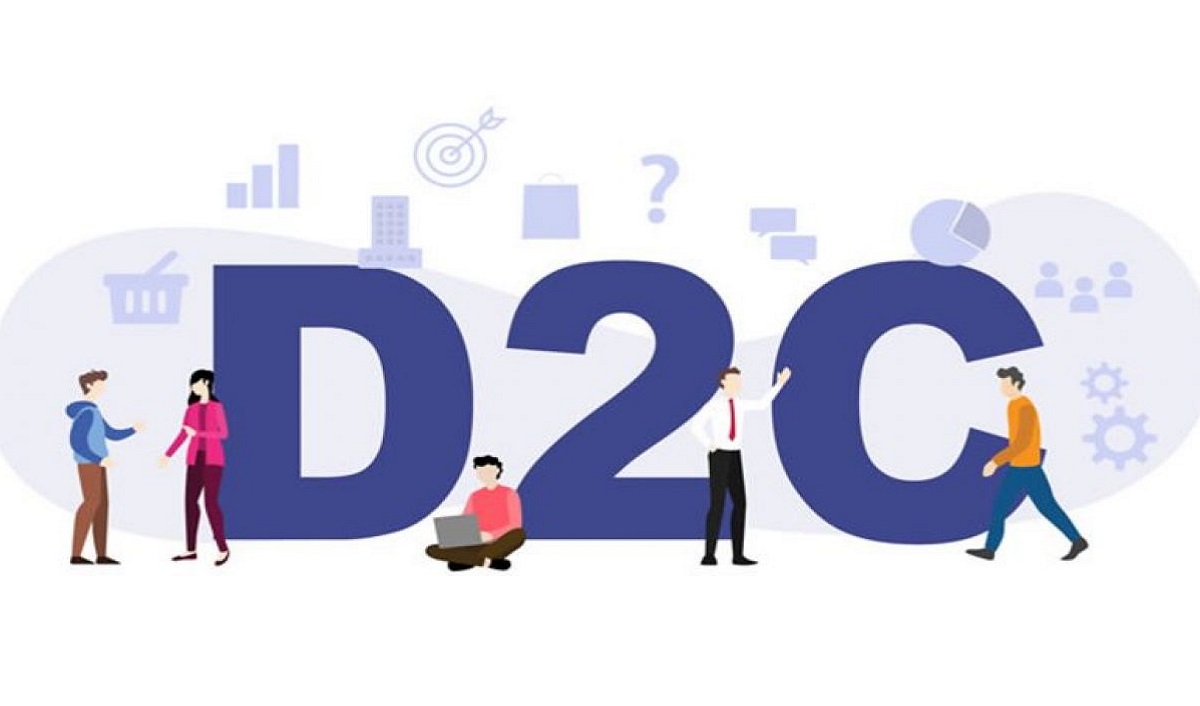In today’s digital landscape, cutting out the middleman and connecting directly with your customers has become a powerful strategy for businesses. The Direct-to-Consumer (D2C) model empowers brands to own the entire customer journey, from product discovery to post-purchase engagement. A dedicated D2C ecommerce app is no longer a luxury but a necessity for businesses looking to thrive in this evolving market.
This guide provides a step-by-step roadmap for business owners looking to develop their own D2C ecommerce app. Whether you’re a budding startup or an established brand seeking greater control and customer intimacy, this guide will equip you with the knowledge to navigate the app development process successfully.
Step 1: Define Your Vision and Strategy
Before diving into development, it’s crucial to lay a solid foundation. This involves clearly defining your goals, target audience, and unique value proposition.
- Identify Your Niche and Target Audience: Who are you trying to reach? What are their needs, preferences, and pain points? Understanding your audience will inform every aspect of your app, from design to features. For example, if you’re selling sustainable clothing, your target audience might be environmentally conscious millennials and Gen Z individuals.
- Define Your Business Goals: What do you want to achieve with your D2C app? Increased sales, improved customer loyalty, richer data insights, or enhanced brand experience? Setting clear, measurable goals will help you track progress and evaluate success.
- Outline Your Unique Value Proposition: What makes your brand and products stand out? Highlight your unique selling points within the app to attract and retain customers. This could be superior quality, innovative features, ethical sourcing, or exceptional customer service.
- Analyze the Competition: Research existing D2C apps in your industry. Identify their strengths and weaknesses to understand best practices and potential areas for differentiation.
Step 2: Plan Your App Features and Functionality
Based on your strategy, start outlining the essential features for your D2C ecommerce app. Consider the entire customer journey, from discovery to purchase and beyond.
- Product Catalog and Browsing:
- Intuitive product listings with high-quality images and videos.
- Detailed product descriptions, including features, benefits, and specifications.
- Advanced search and filtering options to help users find products quickly.
- Product categorization and tagging for easy navigation.
- Options for product variations (e.g., size, color).
- Shopping Cart and Checkout:
- Easy addition and removal of items from the cart.
- Clear display of order summary, including product details, quantities, and prices.
- Multiple secure payment gateway integrations (e.g., credit/debit cards, digital wallets).
- Options for discounts, coupons, and promotional codes.
- Guest checkout functionality for first-time users.
- Secure and streamlined checkout process.
- User Accounts and Personalization:
- Easy registration and login options.
- Profile management for saving addresses, payment methods, and order history.
- Wishlist functionality to save favorite items.
- Personalized product recommendations based on browsing history and preferences.
- Push notifications for order updates, promotions, and personalized offers.
- Order Management and Tracking:
- Order history and details within the app.
- Real-time order tracking with shipping updates.
- Easy access to customer support for order-related inquiries.
- Customer Support and Engagement:
- Integration with customer support channels (e.g., live chat, FAQs, contact forms).
- In-app feedback and review system for products.
- Loyalty programs and rewards for repeat customers.
- Integration with social media platforms for sharing and engagement.
- Content and Storytelling:
- Dedicated sections for brand storytelling and values.
- Integration of blog posts, articles, and lookbooks to engage users.
- High-quality visual content that showcases your products and brand identity.
Step 3: Choose Your Development Approach and Team
You have several options when it comes to developing your D2C ecommerce app. The best choice depends on your budget, timeline, and technical expertise.
- Native App Development: Building separate apps for iOS and Android platforms using their respective programming languages (Swift/Objective-C for iOS, Kotlin/Java for Android). This approach offers the best performance, user experience, and access to device-specific features. However, it can be more expensive and time-consuming.
- Cross-Platform App Development: Using frameworks like React Native or Flutter to build a single codebase that can run on both iOS and Android. This can be more cost-effective and faster, but may sometimes compromise on performance or access to certain native features.
- Hybrid App Development: Combining web technologies (HTML, CSS, JavaScript) within a native container. This is often the quickest and most budget-friendly option but may have limitations in terms of performance and user experience.
Once you’ve decided on the approach, you’ll need to assemble a development team. You can choose to:
- Hire an In-House Team: This provides maximum control and allows for seamless integration with your existing business operations. However, it can be expensive and require significant time for recruitment and onboarding.
- Partner with a Mobile App Development Company: Engaging an experienced mobile app development company in texas (if you are based there or prefer their services) or any other reputable firm can provide access to a team of skilled developers, designers, and project managers. This can be a cost-effective and efficient option, especially if you lack in-house technical expertise. When choosing a partner, look for a company with a strong portfolio of ecommerce app development and positive client testimonials.
- Freelancers: Hiring individual freelancers can be a more flexible and potentially cost-effective option for specific tasks. However, managing multiple freelancers can be challenging, and ensuring seamless collaboration and code quality requires careful oversight.
If you are specifically looking for expertise in this area, searching for an “app development company in texas” that specializes in ecommerce solutions would be a prudent step. They would have a local understanding and potentially a relevant portfolio.
Step 4: Design a User-Friendly and Engaging Interface (UI/UX)
The design of your D2C ecommerce app is crucial for attracting and retaining customers. A well-designed app should be intuitive, visually appealing, and easy to navigate.
- Focus on User Experience (UX): Prioritize a seamless and enjoyable user journey. Ensure easy navigation, clear calls to action, and a smooth checkout process. Conduct user testing to identify and address any usability issues.
- Create an Appealing User Interface (UI): Develop a visually consistent and on-brand design that reflects your brand identity. Use high-quality images and videos, and ensure the app is responsive and adapts well to different screen sizes.
- Information Architecture: Organize your content and features logically to make it easy for users to find what they’re looking for.
- Accessibility: Design your app to be accessible to users with disabilities, following accessibility guidelines.
Step 5: Develop and Test Your App
This is the core phase where your app comes to life. Whether you’re working with an in-house team or an external mobile app development company in texas, ensure clear communication and a well-defined development process.
- Agile Development: Consider using an agile methodology, which involves breaking down the project into smaller, iterative cycles (sprints). This allows for flexibility and continuous feedback throughout the development process.
- Regular Testing: Implement rigorous testing at every stage of development to identify and fix bugs and ensure the app functions correctly across different devices and operating systems. This includes unit testing, integration testing, and user acceptance testing (UAT).
- Security: Prioritize app security to protect user data and payment information. Implement secure authentication, data encryption, and regular security audits.
Step 6: Launch and Market Your App
Once your app is developed and thoroughly tested, it’s time to launch it on the app stores (Apple App Store and Google Play Store).
- App Store Optimization (ASO): Optimize your app’s listing with relevant keywords, compelling descriptions, and high-quality screenshots to improve its visibility in the app stores.
- Pre-Launch Marketing: Build anticipation for your app launch through social media, email marketing, and your website.
- Launch Day Promotion: Announce your app launch through press releases, social media campaigns, and targeted advertising.
- Incentivize Downloads: Offer exclusive discounts or promotions for early app users.
Step 7: Gather Feedback and Iterate
The launch is just the beginning. Continuously monitor your app’s performance, gather user feedback, and iterate on your app to improve its functionality and user experience.
- App Analytics: Track key metrics such as downloads, active users, retention rates, and conversion rates to understand how users are interacting with your app.
- User Feedback: Actively solicit feedback through in-app surveys, reviews, and social media channels.
- Regular Updates: Plan for regular app updates to address bugs, introduce new features, and keep your app fresh and engaging.
Conclusion:
Developing a successful D2C ecommerce app requires careful planning, a customer-centric approach, and a strong development partner if you choose to outsource. By following these steps and focusing on providing a seamless and engaging shopping experience, you can build a powerful platform to connect directly with your customers, build brand loyalty, and drive sustainable growth. Remember to choose the right app development company in texas or elsewhere that aligns with your vision and can bring your D2C dream to reality. Good luck!




